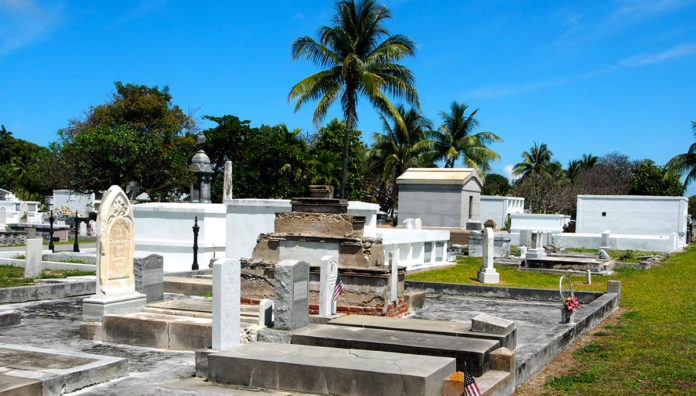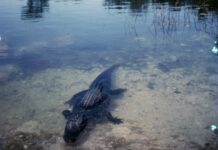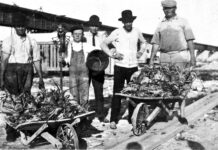
Darien, Georgia, is the second oldest planned city in Georgia. Located on the Atlantic coast, Darien is situated at the mouth of the Altamaha River. It is approximately halfway between Savannah, Georgia, and Jacksonville, Florida. Walter Cathcart Maloney was born in Darien on Feb. 7, 1813. Walter was the younger of two sons who grew up on the family’s Georgia plantation. A Catholic priest educated the boys.
After the death of their parents, the two boys were left to run the plantation; only that was not the life Walter wanted to live. When his older brother asked him to stay in Georgia and help work the plantation, Walter had other plans and told his brother that he “…was determined not to be a negro driver.” In 1837, at the age of 24, Walter Maloney climbed aboard a schooner and sailed to the West Indies. He settled on the island of Key West.
Not long after arriving on Key West, Walter began courting 18-year-old Mary Elizabeth Rigby, the daughter of one of the early Bahamian families that relocated to Key West. Their marriage would result in a fruitful union that brought six sons and one daughter into the world. Shortly after their marriage, in the early months of 1839, Walter and Mary moved to Indian Key, where Walter was employed as a clerk by the island’s predominant businessman, Jacob Housman. While living on the island, Walter and Mary would have their first child, Walter C. Maloney, Jr., born June 9, 1839.
Also living at Indian Key during the Maloney tenure was Dr. Henry Perrine, his wife, and three children. The Perrine family history is a tragic one. Dr. Perrine would be killed at the hands of Indians during the Aug. 7, 1840, attack on Indian Key. Perhaps because of that tragedy, two of the Perrine children, Hester and Henry Jr., wrote about their experiences during their 20-month stay on the island. The pages they would write provide insights into island life during that period that would have gone otherwise unrecorded.
Two events recorded by Hester are not particularly relevant to meaningful histories associated with Indian Key, but they are remarkable observations in their own way. Hester described seeing two dark shadows moving quickly through the clear Atlantic pass separating Indian and Tea Table keys in one event. What she saw was a large shark, described as 16-feet in length, chasing a baby sperm whale. The shark was faster, caught the whale by the tail, and chomped it off. A bloody cloud swirled in the shallows in front of the house where the Perrine’s lived during their time on the island.
Another interesting event was the response by island residents when one day, three waterspouts formed off Indian Key. According to Hester, some of the men took control of one of the cannons situated around the island, pointed it toward the three waterspouts spinning, and fired at them, thinking the cannonball could disrupt the forces of nature. The enemy, though fired upon, did not respond to the assault but churned past Indian Key toward Lower Matecumbe. Before they reached the island, the waterspouts fizzled out and dissipated.
Storms, however, if even just metaphorically, would still be brewing on Indian Key’s horizon. Through the entirety of Maloney’s stay on the island and for some time after, Maloney served as Jacob Housman’s clerk. Though Housman and the men who worked for him had a reputation for operating beyond the scope of the law, Maloney did not fit that description. Rather, he benefited Housman in another way as Maloney was recognized as a “neat and accurate record keeper.”
It would not be Maloney’s only job. In 1839 he served as clerk of the superior court for a few months when, yearly, it served its single term at Indian Key. As of 1840, Maloney served as the island’s justice of the peace and the auctioneer. In the summer of 1840, Maloney and his family decided to pack up and leave Indian Key. Moving back to Key West was a fortuitous decision. Walter packed up his house, wife, and baby boy, boarded a schooner, and sailed to Key West.
That August, Maloney was sailing back to Key West after a trip north to Key Biscayne’s Cape Florida. The schooner stopped at Indian Key on Aug. 6, 1840, but did not stay overnight. Hours after the schooner and Maloney left Indian Key and continued sailing for Key West, Indian war canoes would begin paddling away from Lower Matecumbe and arriving on Indian Key. Dr. Perrine would be one of six people who would die as a result of the event.
Walter C. Maloney would go on to write one of the first histories of Key West. He would also become the namesake of Stock Island’s Maloney Avenue.

























